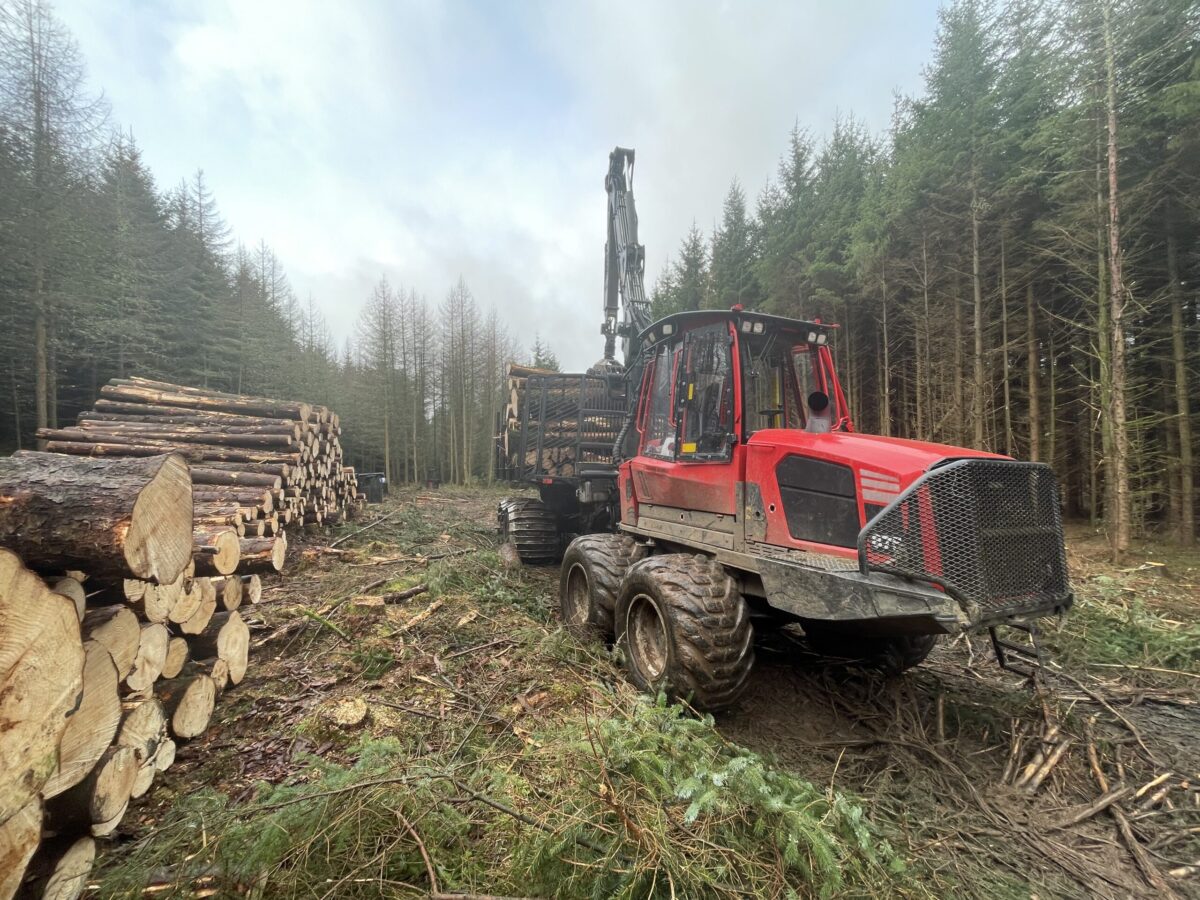Timber harvesting has to be one of the most challenging professions out there!
Cut-throat contract prices, slow payments, staff shortages, equipment failure, theft, vandalism, difficult foresters and irate members of the public are just some of the problems contractors face on a regular basis.
Having good reliable equipment is paramount to running any successful business, a bogus machine doesn’t take long to have a negative impact on your finances and reputation. Unfortunately, when choosing equipment not everyone can afford to buy, or have enough work in front of them, to make the repayments on the latest all singing and all dancing shiny new machines. This leaves some contractors with no alternative but to look to the used equipment market where hopefully they can find a good, well-maintained machine that sits comfortably within their budget.
Just recently I have been helping a friend out by operating his six-year-old Komatsu 875 forwarder which had just over 11,000 hours on the clock. I thought that this would make an ideal contender to see how this forwarder has stood up to the test of time. The present owner has had the forwarder for about three years and so far has had no problems or expensive breakdowns.
The forwarder was working not far from the village of Strachur in Argyll. My first impressions
were that I thought it looked around 3 years old and had probably done about 5-6,000 hours of work. It was in first class condition, there were no visible dents or bashes, and the paintwork was still bright and shiny.
Ground conditions were typical for Argyll, steep and wet. On the plus side it was large volume trees that had been growing yielding oversize and regular saw logs and a small proportion of chip. Some of the oversize 4.9m logs were in excess of 2m³. All the timber was being extracted uphill and it was a long hard pull with a few steep clicks thrown in for good measure. I was fortunate as a lot of work had been done on the main extraction track prior to me arriving; drains had been opened on the high side with bridges built at intervals across the track to prevent water running down the brash mat and plenty of thatching had been done in the wetter areas.
The forwarder was having to run with two sets of band tracks. I had operated two other Komatsu’s earlier in the year so was reasonably familiar with the controls but this model had the advantage of a weigh link which was fitted just above the rotator.
Although it was a cold frosty morning the AGCO 6 Cylinder 256hp engine started immediately and had a nice crisp note to it. Once it reached running temperature, I set off backwards down the hill in search of timber.
This 16 tonne load capacity forwarder is fitted with the bunk widening kit, which is ideal for getting your weight on without having to load the forwarder too high. The loading crane was a Komatsu 145F single extension dipper with 8.5m reach.
The steering is quick and precise with no play and the forwarder had a good solid feel to it when driving. Although I was reversing down the twisty track it was easy to manoeuvre, this was just as well as there were some substantial drops off the edge of the track if I got it wrong!
-
That’s a remarkable amount of work hours for a single machine, the Norcar 600 owned by Erkki Rinne is taken well care of, it even has the original Diesel engine.
-
Kieran Anders is a forestry contractor working in the lake district. His work involves hand cutting and extracting timber using a skidder and tractor-trailer forwarder.
-
It is not possible to eliminate chain shot, but there are simple steps that can be taken to reduce the risk.
-
Arwel takes great pride in the fact that the mill has no waste whatsoever, “the peelings are used for children’s playgrounds, gardens and for farm animals in barns in the winter and the sawdust has multiple uses in gardens and farms as well.
-
Timber hauliers need to encourage young blood in, and also look after the hauliers we have, we need make the sector a safe and positive place to work.
FIND US ON
Related Posts


Once I arrived at the timber and started loading I found the crane was a pleasure to use. I like the quick set up Komatsu has where you can speed up and slow down all the crane movements with the +/- button on the left handset. I find 70% is a nice speed as it is reasonably quick and controllable but still very smooth to use.
There was no play whatsoever on any of the pins and bushes and the kingpost had no signs of wear and no sideways movement when you stopped slewing. The 145F crane was incredibly powerful as there was a lot of oversized 4.9m logs in excess of 2m³ which it was easily capable of loading.
It was difficult to believe the hours this machine had done, I would have sworn the hours were wrong but this is a machine that has been well maintained and used by good operators who weren’t shy of using a grease gun.
The weighing system was handy as there was a steep click on the way out and loading around 14-15 tonne was perfect, any more weight and you required the use of diff locks and had to slow the potentiometer right down to increase traction.
I couldn’t fault the forwarder as it pulled like a train on the long steep uphill extraction. Most of the hours were done in hard frosty ground conditions but even when the milder, wetter weather arrived it still performed perfectly with no drop in production whatsoever. I was helping out whenever I could and averaged over 100 hours on this site with the forwarder proving to be very reliable. I stopped only once to replace a hydraulic pipe.
A tank of diesel lasted my full ten-hour shift using the Eco Drive. Fuel consumption averaged around 13.9ltr of diesel an hour – which I thought was very good considering the ground conditions – extracting approximately a load an hour. AdBlue usage was around 8 litre each day. Someone at Komatsu has really thought out the refuelling process too. First you lower the rear steps to get access to the flap you open where you attach the refuelling hose. This flap locks the top cover in place which is lifted to gain access to the fuel cap which needs to be vented to prevent a pressure build up in the diesel tank.
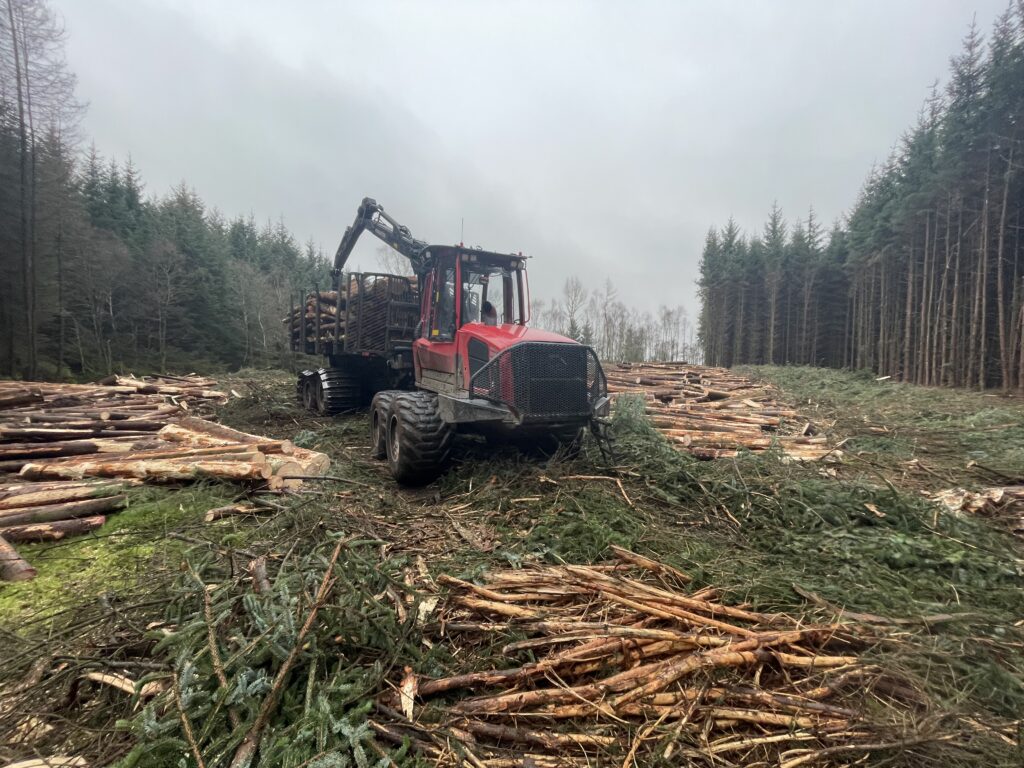

All the maintenance is straight forward, greasing points are easily seen with good access, bonnet and cab are lifted by hydraulics with the push of a button.
The cab is a spacious, comfortable workstation with good all-round vision. The controls are well laid out and easily identified, I do like the well placed large front and rear information screens with the integrated MaxiVision mapping system. This is a great help in negotiating unfamiliar territory.
The forwarder was moved to another site near Stirling after Christmas and I have done almost another 100 hours since then. This is a flat site running on rear band tracks with higher production, up to now I have been averaging around 20 tonne/hour. There are a few more sizes including some horrible little 1.7 fencing posts and some extraction distances around 1,000m. Fuel consumption is down to around 12ltrs/hr with a lot less AdBlue usage at around 5 litre per day.
I can’t fault this Komatsu 875, as far as I am aware it has never had any serious problems or mishaps, it is still under the MaxiFleet contract where Komatsu come out and service it every 500 hours.
This proves that using quality operators and carrying out regular servicing and maintenance is the answer to getting the maximum service life out of a machine. I am thoroughly enjoying operating this forwarder, it is everything you would expect and more.
It is tons at roadside that pay the bills and this forwarder has proven to do that from day one. I would have no hesitation in recommending Komatsu forestry machines to others and I would imagine this forwarder still has
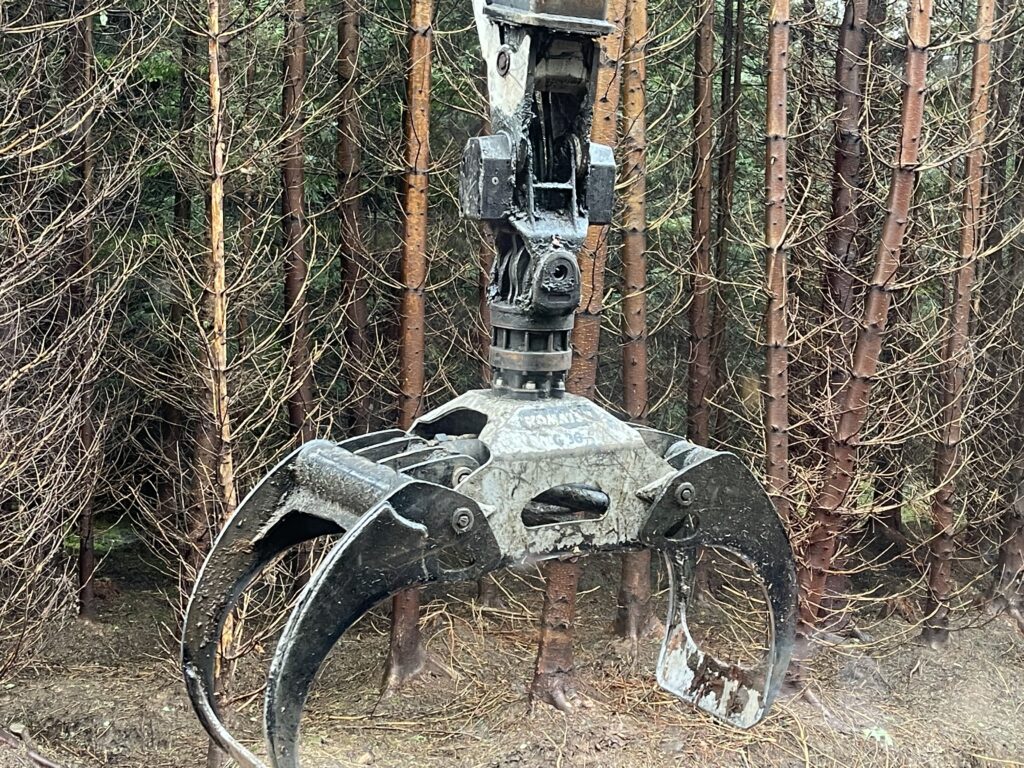

many thousands of hours work and hundreds of thousands of tonnes left in the tank. I have operated many Valmet/Komatsu’s over my career and found them all to be of an excellent build quality and had very few problems with any of them. They are a very stable forwarder with good ground clearance, plenty of power, good traction and are great forwarders for working on wet and boggy ground conditions.
Although not fitted on this model, the one feature I would recommend is the Comfort Ride. This takes a lot of the cabin shock and vibrations experienced by operators when working on uneven ground and will help to increase productivity.
The only negative point I could find was had that the transmission can be a little bit noisy when pulling hard on an uphill extraction, on the flat site it is working now it is pretty quiet.
So many operators are brand loyal and will slate other manufacturers but in all fairness Komatsu are manufacturing machines that if properly looked after will give contractors a long and profitable service life whether purchasing new or second hand.
This article features in the latest issue of Forest Machine Magazine: The Free Publication For the Forest Industry. Digital version available here
Forest Machine Magazine is written and edited by a forest professional with over 40 years hands on experience. We are dedicated to keeping you informed with all the latest news, views and reviews from our industry.
To support us you can subscribe to our bi-monthly magazine which is delivered to your door from only £15 per year.
Subscribe here
#homeoflogging #writtenbyloggersforloggers #loggingallovertheworld
-

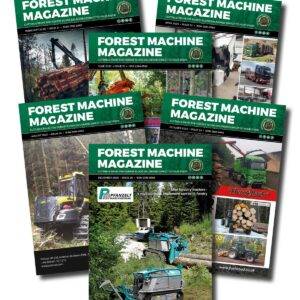 1 Year Subscription£0.00
1 Year Subscription£0.00 -

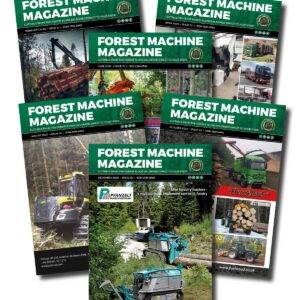 2 Year Subscription£0.00
2 Year Subscription£0.00 -

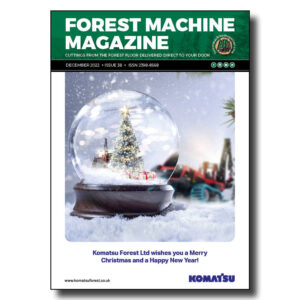 Issue 38£6.00
Issue 38£6.00 -

 Sustainable Logging: Powering The Planet T-Shirt£17.50 – £20.00
Sustainable Logging: Powering The Planet T-Shirt£17.50 – £20.00 -

 Sustainable Logging: Powering The Planet Hoodie£33.00 – £36.00
Sustainable Logging: Powering The Planet Hoodie£33.00 – £36.00

